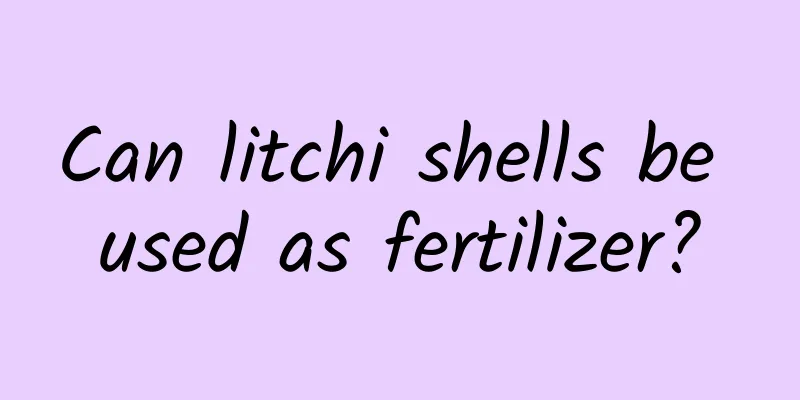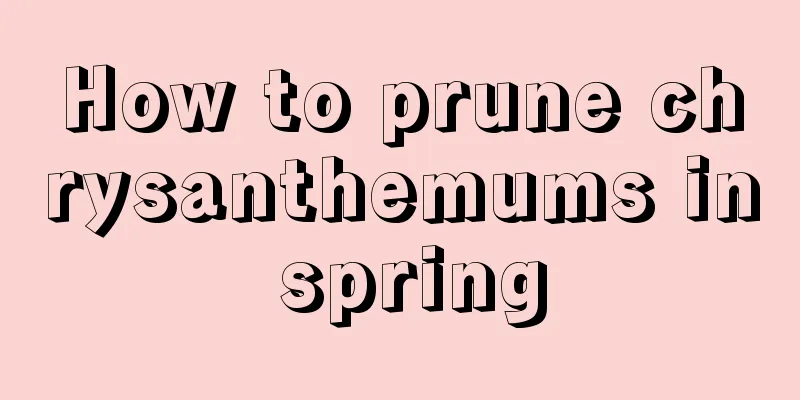How to deal with yellowing leaves of bird's nest fern

Insufficient or excessive waterInsufficient water will cause the leaves of the bird's nest fern to turn yellow, because when the potting soil lacks water or the air is relatively dry, the leaves of the bird's nest fern tend to curl at the edges and gradually turn yellow. Too much water will cause water accumulation in the pot soil, making the leaves of the bird's nest fern sluggish, yellowing, and even root rot. When watering the bird's nest fern, you need to pay attention to ensuring that the soil in the pot is moist and the air humidity is high. It should be watered sufficiently during the growing season, and the leaves should be sprayed with water in time in summer. It is best to spray more water and water less when the temperature is low in winter. However, in rainy seasons, avoid watering, and in winter, avoid excessive water to prevent root rot and yellowing leaves. Insufficient lightInsufficient light can also easily cause the leaves of the bird's nest fern to turn yellow. This is because if the bird's nest fern is kept indoors for a long time, it will not be exposed to enough light, and the leaves will turn yellow. However, the light cannot be too strong, otherwise the leaves will turn yellow. Therefore, when breeding, it should be placed in a bright place indoors and cannot be hidden for a long time. In summer, it needs to be shaded. Improper fertilizationWhen the bird's nest fern plant lacks fertilizer, or when it is fertilized too often, the leaves of the bird's nest fern will turn yellow. Therefore, when potting bird's nest ferns, it is necessary to apply fertilizer reasonably during its growth period and ensure the balance of various elements, but stop fertilizing during the high temperatures in summer and the low temperatures in winter. Improper temperatureImproper temperature, for example, when the temperature is too low in winter, the bird's nest fern plants will be frostbitten and the leaves will turn yellow. In addition, if the temperature is too high due to excessive sunlight for a long time, the leaves will also turn yellow. Therefore, it is necessary to maintain an appropriate temperature during the growth period, between 15℃ and 28℃. When the temperature is higher or lower than this range, measures need to be taken. The potting soil needs to be replacedIf the soil in which the bird's nest fern grows is not changed for a long time, or the pot is not repotted for a long time, the soil will gradually become hardened and airtight, causing its leaves to turn yellow easily. Therefore, the bird's nest fern needs to be repotted every two years. When repotting, you can remove the old soil and trim the roots and yellow leaves. Pests and diseasesWhen the bird's nest fern is attacked by nematodes or anthrax, its leaves will turn yellow or develop spots. If it is a nematode disease, you can use furadan granules to kill the insects. If it is anthrax, you can use 75% thiophanate-methyl wettable powder for spraying and treatment. |
<<: What to do if the leaves of the maidenhair fern turn yellow
>>: How to solve the problem of yellow leaves of asparagus fern in winter
Recommend
When is the flowering period of purple bamboo plum, and how long does it take for the flowers to wither?
1. How long does it take for flowers to wither? I...
How to breed silkworms
Silkworm farming is favored due to its low cost, ...
How to prune strawberries
When to prune strawberries Strawberries can gener...
What is the best fertilizer for red sandalwood?
Fertilization time of red sandalwood Because the ...
Cream cabbage planting time and method planting technology and management
Cream cabbage planting time Cream cabbage grows v...
How to promote new buds of tiger lily
Bottom Before we prepare the soil for it, we can ...
What are the breeding methods and precautions for spring feathers?
Spring Feather Introduction Spring fern belongs t...
When does bougainvillea bloom and why doesn't it bloom
1. Flowering time The flowering time of Bougainvi...
Repotting without pruning the roots is a waste of time, and expecting the pot to burst is just a dream!
Repotting without pruning the roots = no use When...
How to make hawthorn seeds germinate quickly
Hawthorn seed germination environment After the h...
How to propagate crystal anthurium
1. Cutting Different varieties of anthurium have ...
How to grow crape myrtle
1. Suitable loam In order to achieve good drainag...
How to care for hyacinths in soil and what are the precautions
1. How to maintain 1. Loose soil: For hyacinths g...
How to propagate green radish by hydroponics
1. Cutting method Cut strong stems and vines, con...
The difference between Verbena and Hydrangea
1. Different plant types Verbena is a herbaceous ...









